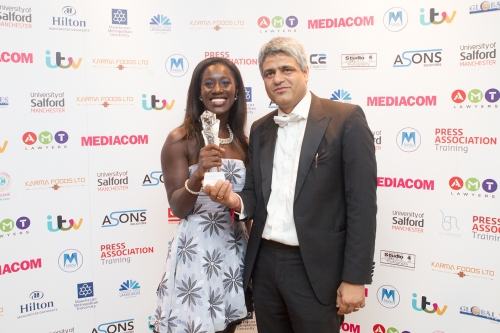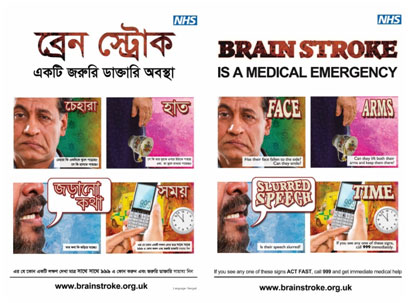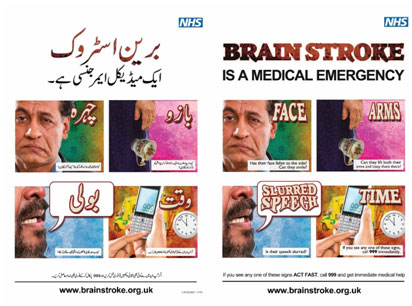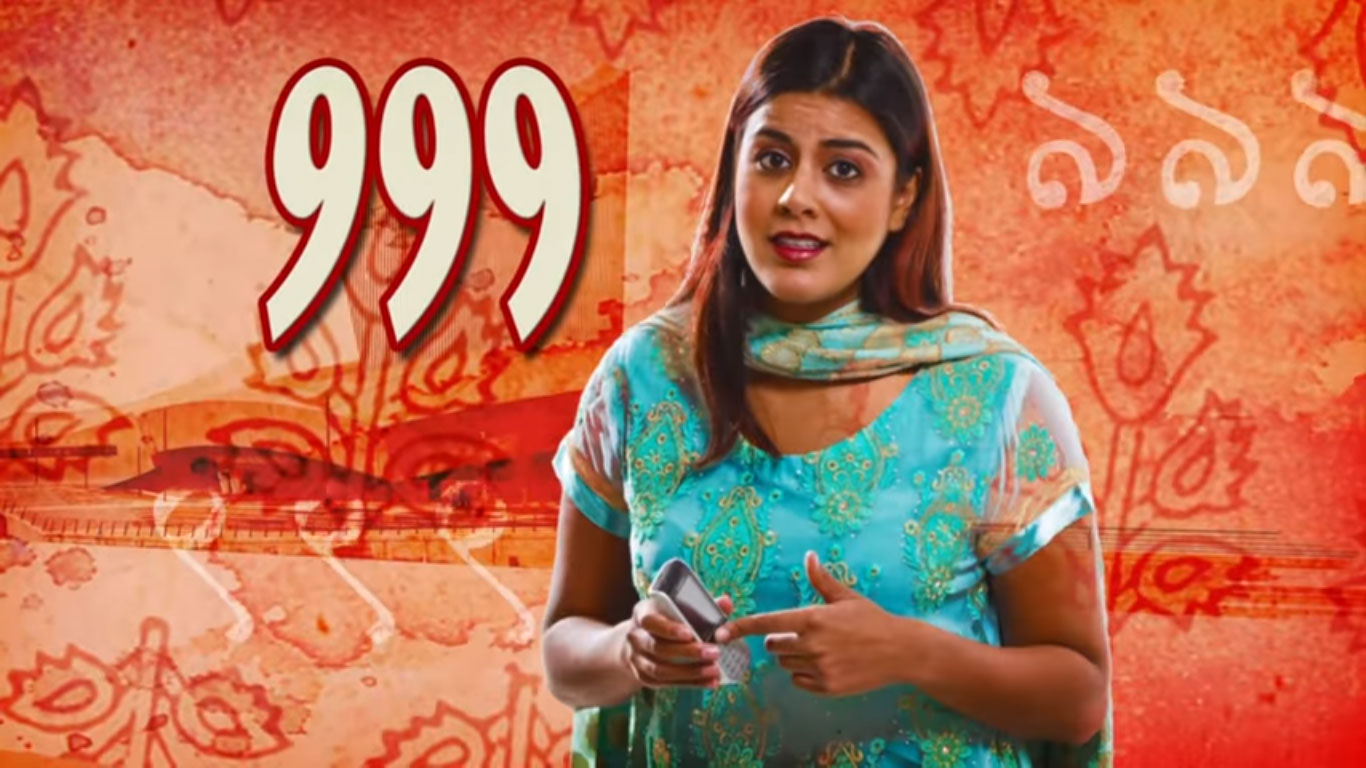
NHS BAME ‘Stroke Campaign’
Background
Brain stroke, commonly known as stroke is a dangerous condition where oxygen supply to the brain is interrupted, resulting in a serious loss of body function and thinking process. This leaves the affected person paralysed and unable to lead a normal life. To increase awareness around stroke and its symptoms, the NHS launched the ‘When Stroke Strikes, Act F.A.S.T’ campaign in 2013. It emphasised on the key indicators of stroke – drooping Face, unresponsive Arm and slurry Speech, telling people to call 999 immediately. While this was a national campaign catering to the general population in the UK, one of the key ethnicities who would benefit from the awareness was South Asians.
Studies conducted by stoke.org.uk* established that stroke related deaths are higher among South Asians as compared to the mainstream White population. This is because South Asians are more likely to develop high blood pressure, diabetes or high cholesterol which all contribute towards conditions conducive to a stroke. The National F.A.S.T. campaign for stroke failed to increase awareness among South Asians in areas around the Greater Manchester region as per research conducted by the Greater Manchester Public Health Network (GMPHN). The message didn’t find much relevance among the target audience.
The Greater Manchester area has a large Pakistani and Bangladeshi population. These communities are attached to their roots and follow their own culture, language and customs.With a view of increasing awareness around brain stroke in the Greater Manchester area, GMPHN asked us to develop a bespoke campaign targeted at the ethnic population within the region.
Insight & Challenge
The South Asian communities in the region were among the oldest migrants to the UK. They started settling in decades ago and have grown over the years. This meant that the population consisted of the older generation who migrated and the younger generation who were born and raised in the UK. These were different audience. While the younger generation assimilated in the mainstream UK culture more seamlessly, by virtue of being raised here, the older generation still lived in an ethnic cocoon which reminded them of their homeland. The National F.A.S.T campaign may have had some cut through with the younger population, but it came across as completely irrelevant to the older generation. Understanding and identifying the signs of stroke could mean the difference between life and death and this critical message needed to be communicated to the entire ethnic population effectively and clearly.
To add to this, the term ‘stroke’ was used to describe any physical calamity, especially a heart attack (heart stroke). So, we not only needed to make them aware of a brain stroke but establish a clear association with it. For this, it was imperative that we visually demonstrate the symptoms and not just explain them.
Campaign
The key was to develop a campaign with utmost clarity and relevance. We explored a range of options to communicate this effectively. Just translating the National F.A.S.T campaign into languages would not cut through. This campaign needed to be customised. It needed to strike a chord with the communities, making them feel that it was conceptualised keeping them in mind and the message was for them. Most of the target audience who would benefit from awareness around stroke were older and so the style and treatment of the advert would need to resonate with them. So how did we go about delivering a serious message in a sugar-coated way that would stick in the minds of the older generation?
People migrated from the rural parts of Pakistan and Bangladesh decades ago, before current mediums like TV and the internet became popular. During that period, street plays (also known as Tamashas) were popular. These street plays enacted the message in a unique style and were widely used as tools to generate awareness and to educate. We created a TV advert in this uniquely South Asian style. The characteristic rhyme and rhythm also helped remember the message better, just like how songs are easier to remember than dialogues or prose. The advert used the same patterns, colours, music and style along with visually demonstrating the signs of stroke on the body. Throughout the advert and the campaign, we referred to stroke as brain stroke to establish the difference between this and a heart attack/stroke. The advert was aired on ethnic TV channels.
Advert
Research suggested that the older members of these ethnic groups often relied on the young in the family to get more information around their health, book GP appointments and so it was imperative that we include touchpoints that are frequented by them. The TV campaign was therefore supported by a microsite (http://www.brainstroke.org.uk/) where information on stroke was available in Hindi, Urdu, Punjabi Sylheti and English languages. This microsite and the message around stroke awareness further spread into the community through posters and leaflets created in the different languages. These were widely displayed in the key high traffic ethnic areas in places like mosques and shops where the community frequent.
Posters
Microsite
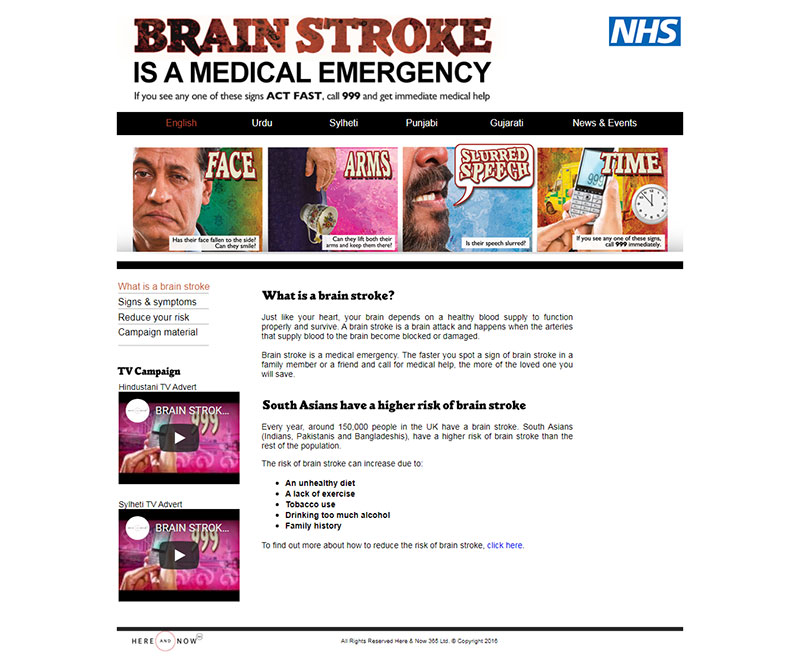
These touchpoints ensured that the general ethnic population in the Greater Manchester area got the message clearly and simply. But there is still a part of the population who are not TV viewers and generally spend time in their trade. To target them, we leveraged the local press and radio through heavy duty campaigns, extensive outreach activity that spanned over 120 locations in the Greater Manchester area, print material for GP surgeries and talks by stroke experts, GPs and stroke survivors in the community centers.
Result
Through the multiple touchpoints and with the heightened relevance of the message, the campaign delivered an unprecedented 10% increase in awareness across the ethnicities in the region.The campaign was so successful that it was recognised at the prestigious Asian Media Awards in 2015 with the Head of Communications and Engagementof the Greater Manchester Public Health Network in attendance.
